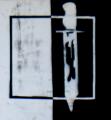I suggest that the start point for a layman is a study of the theory of small arms fire - (section starting page 19)
By now countries who fight only on home ground should have selected weapons and calibre which suits their circumstances best while the adventurous countries (US, Brits, France) should have the weapons and equipment in their 'golf bags' to select for each geographic zone they may find themselves committed to.
Notice I used the word 'should' ... then factor in stupidity, bribery and corruption and see that this is not so almost anywhere.
















Bookmarks